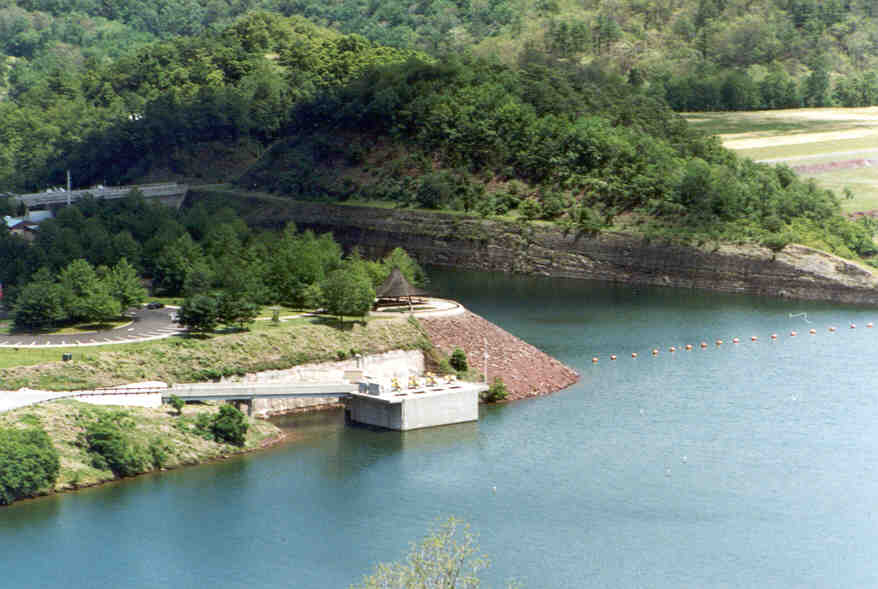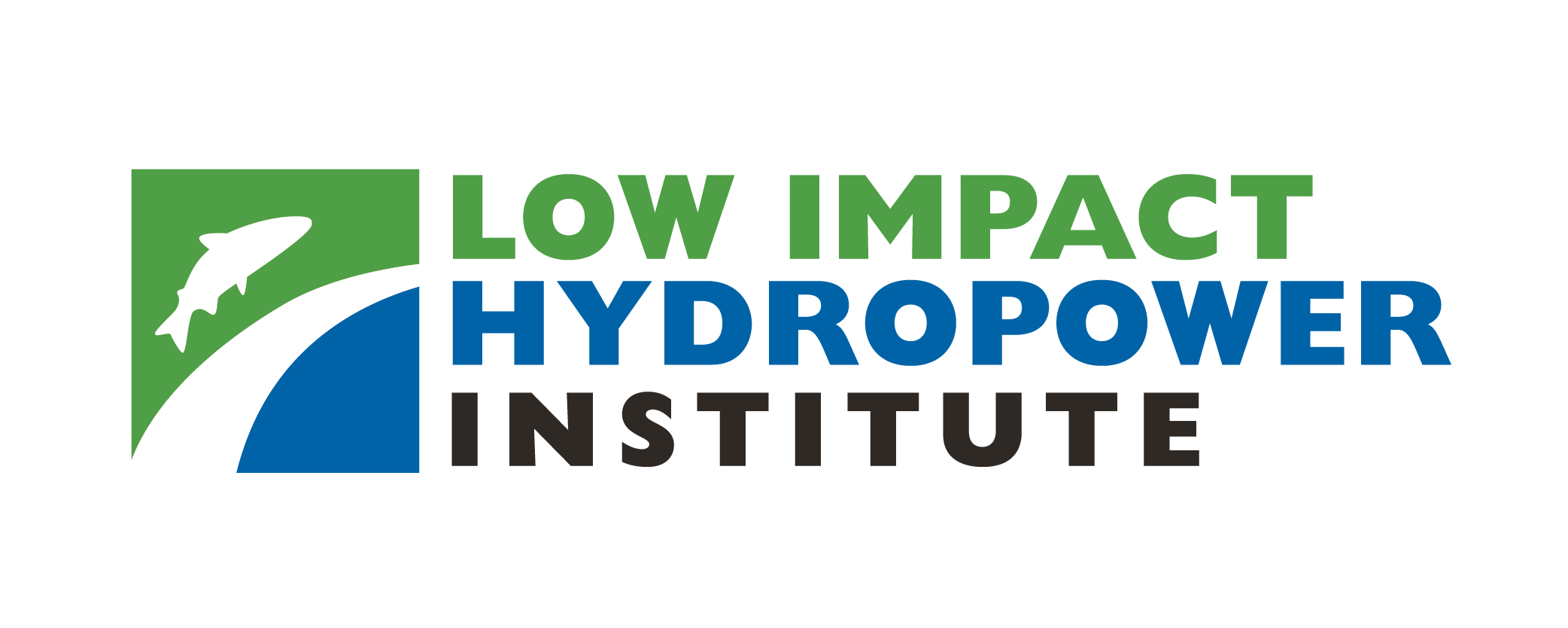LIHI Certificate #23 - Raystown Project, Pennsylvania

| Project Name | Raystown |
| LIHI Certificate No. | 23 |
| LIHI Certificate Term | August 11, 2022 – August 10, 2032 |
| Owner | Allegheny Electric Cooperative |
| State | Pennsylvania |
| Location | Located at river mile 5.5 on the Raystown Branch of the Juniata River, in Huntingdon County in south central Pennsylvania. |
| Installed Capacity | 21 MW |
| Average Annual Generation | 87,889 MWh |
| Facility Type | run-of-release |
| FERC No. | P-2769 issued in 1982, expires 10/31/2032 |
Raystown Dam, managed by the U.S. Army Corps of Engineers (USACE), is located on the Raystown Branch of the Juniata River, upstream of its confluence with the Juniata River and further upstream of the Juniata River’s confluence with the Susquehanna River. Raystown Dam and Lake are located in south central Pennsylvania in Huntingdon County, near the borough of Huntingdon. Construction of the dam began in October 1968 and was completed in October 1973.
The Allegheny Electric Cooperative (AEC) operates the Raystown Hydroelectric Project (a.k.a. William F. Matson Generating Station). The hydroelectric station, completed in 1988, is located at the base of Raystown Dam and is operated in close cooperation with the USACE which gives all flow and temperature regulating instructions to AEC. Flow discharges are adjusted on a daily basis to minimize river fluctuations downstream.
The project includes an intake tower, intake tunnel, penstock, powerhouse, two generating units, and wheel gate. The hydroelectric facilities are separate from the USACE-owned dam.
Raystown Dam, which is 225 feet high, consists of a rolled earth and rockfill embankment with a gated spillway in the right abutment, the top 3.5 feet of ungated spillway being a fuse plug of erodible backfill material. The gated spillway is controlled by two 45-foot-square Tainter gates and is equipped with a warm water outlet system with a 4.75-foot by 6.75-foot slide gate served by inlet ports at three levels. There is a low-level outlet tunnel with two 5.5-foot by 10-foot gates.
The hydroelectric station intake tower has the capability of withdrawing water from different levels of the lake for downstream temperature control. Intake trashrack clear spacing is 3 inches. The concrete tunnel stretching from the intake tower to the powerhouse is 12 feet in diameter, steel-lined, and 930 feet long. The steel penstock is 12 feet in diameter and 550 feet long. There are two power-generating units in the powerhouse, with a combined capacity of 21 MW. Twenty-two adjustable wicket gates control flow through each unit. Flow is also regulated by the closure of two turbine shut-off valves located upstream of the generating units. Flow through the tunnel, penstock, and powerhouse can be regulated by the closure of a 12-foot square wheel gate located in the intake structure.
The project operates in a run-of-release mode. Flows are controlled by the USACE and the project passes flows as available. USACE provides seasonal minimum flows of 200 cfs from May through November and 480 cfs from December through April. The reduction in minimum flow from May through November is required to prevent significant drawdown of the lake throughout the summer and fall. This flow regime was developed by USACE and approved by the Pennsylvania Fish and Boat Commission (PFBC) to protect fish, wildlife, and water quality.
Waters within the project reach are not listed as impaired by the state. Water quality monitoring conducted by USACE and AEC indicates water quality standards are met in the lake and downstream reach. AEC also operates water temperature gates to maintain the downstream warmwater recreational fishery in order to meet seasonal discharge temperature targets, and conducts water temperature monitoring in the lake and tailrace year-round to verify the targets.
Historically, the Juniata River supported populations of American shad and American eel. Due to the development of four hydroelectric dams on the Susquehanna River in the early 1900s, the species were extirpated from the area around 15 years before the project was complete. Efforts to restore fish passage are being undertaken at several of the Susquehanna River dams. The lake supports muskellunge, tiger muskellunge, largemouth bass, walleye, black and white crappie, bluegill, striped bass, yellow perch, channel catfish, and brown bullhead. Pumpkinseed, carp, white sucker, rock bass, and several species of minnows. The downstream reach is stocked with brown and rainbow trout. FERC determined, based on a study conducted for project licensing that fish mortality from the reservoir would be less with the hydroelectric project than without it due to the large drop in velocity from approximately 20 feet per second prior to the hydro project to 3 feet per second with the hydro project.
The project lands consist of around 11.5 acres around the powerhouse.. No lands of significant ecological value exist in the project area. USACE manages the Raystown Lake shoreline under its Master Plan with a 300-foot conservation buffer around the lake.
Threatened or endangered species potentially present in the reservoir area include several listed species and species of concern including bats, moths, dragonflies and damselflies, and plants, as identified by USACE in its Master Plan. Project operations do not affect these species. In the downstream reach Indiana bat, little brown bat, northern long eared bat, bald eagle, northeastern bulrush and Virginia mallow may be present. Project operations are not likely to affect these species and AEC has worked with USACE to provide locations for two bat boxes, several acres of pollinator plantings, and protection of a wetland adjacent to the Project’s parking lot.
While there are no known cultural or historic resources associated with the project. AEC consults with the State Historic Preservation Office prior to any construction or ground disturbing activities.
Recreational resources at the project include an Americans with Disabilities Act accessible fishing pier and parking area in the tailrace. Other recreation facilities are present but are managed by USACE, not the project. Public access is provided free of charge.
Compliance Status
There are no facility-specific conditions in the current Certificate.
2024: No material changes or compliance issues were identified. The project remains in compliance based on the annual review.
2023: No material changes or compliance issues were identified. The project remains in compliance based on the annual review.
2022: Annual reporting for the current Certificate has not yet taken effect.
Certification History
April 19, 2023: The Low Impact Hydropower Institute has issued a final decision on the recertification of the Raystown Hydroelectric Project. The certification term is August 11, 2022 through August 10, 2032.
February 22, 2023: The Low Impact Hydropower Institute (LIHI) has preliminarily approved the Raystown Project (LIHI #23) for a new 10-year term of Low Impact Certification. The full application and reviewer’s report are available below. This decision is preliminary pending the 30-day appeal window. Only those who commented on the initial application during the 60-day comment period are eligible to file an appeal. Such appeal needs to include an explanation as to how the Project does not meet the LIHI criteria. Appeal requests can be submitted by email to comments@lowimpacthydro.org with “Raystown Project” in the subject line, or by mail addressed to the Low Impact Hydropower Institute, 1167 Massachusetts Ave, Arlington, MA 02476. All requests will be posted to the website. The applicant will have an opportunity to respond and any response will also be posted. Requests must be received by 5 pm Eastern time on March 24, 2023. If no appeal requests are received and the decision becomes final, the Certification term for the Project will be August 11, 2022 through August 10, 2032.
December 6, 2022: The Low Impact Hydropower Institute (LIHI) has received a complete recertification application from Allegheny Electric Cooperative, Inc. for the Raystown Project. The complete application can be found below. LIHI is seeking comment on this application. Comments that are directly tied to specific LIHI criteria (flows, water quality, fish passage, etc.) will be most helpful, but all comments will be considered. Comments may be submitted to LIHI by e-mail at comments@lowimpacthydro.org with “Raystown Project Comments” in the subject line, or by mail addressed to the Low Impact Hydropower Institute, 1167 Massachusetts Avenue Arlington, MA 02476. Comments must be received at the Institute on or before 5 pm Eastern time on February 4, 2023 to be considered. All comments will be posted to the web site and the applicant will have an opportunity to respond. Any response will also be posted.
February 20, 2015: The Raystown Hydroelectric Project (FERC No. 2769), LIHI Certificate No. 23 has been determined by the Executive Director, Michael J. Sale to continue to satisfy the requirements of the Low Impact Hydropower Institute (LIHI) Certification Program. In rendering this Certification, the Institute’s Executive Director used authority delegated by the LIHI Governing Board and the unanimous recommendation by the LIHI Governing Board Technical Committee resulting from a full review of the Application Reviewer’s report and all public comments and additional materials provided by the Applicant. The decision to recertify the Raystown Creek Hydroelectric Project is for an 8-year term, effective August 11, 2014 and expiring August 11, 2022 with the following condition:
- Condition 1: Along with its annual compliance letter, AEC shall include an update on any changes in PFBC’s downstream fisheries management objectives that may have occurred or have been discussed over the past year. AEC shall cooperate with PFBC on any studies related to new coldwater fisheries management downstream of the facility, subject to the fact that the Corps of Engineers will have final say over structural or operational changes at their dam. AEC shall keep LIHI apprised of developments in this area on an annual basis.
June 4, 2014: The Low Impact Hydropower Institute has received an application for a second term of certification of the Raystown Hydroelectric Project. The current certificate term is set to expire on August 11, 2014, but has been extended to March 31, 2015 to allow for internal review of the application for an additional term. The application materials can be found in the “Files” section below.
January 22, 2007: The Raystown Hydroelectric Project has been certified as low impact for an eight year term, effective August 11, 2006 and expiring August 11, 2014.
August 11, 2006: Allegheny Electric Cooperative has submitted an application for the certification of the Raystown Hydroelectric Project.
Certification Files
2022 Recertification
2015 Recertification
- Raystown Recertification Review Report 2015
- Raystown Recertification Questionnaire
- Application Attachment – Agency Contacts
- Application Attachment – Pennsylvania Fish & Game Commission
- Application Attachment – Project Description
- Application Attachment – Raystown Lake Map
- Application Attachment – Raystown Pictures
2006 Certification
- Raystown Review Report 2006
- Raystown Certification Questionnaire 2006
- Application Attachment – Resource Agency Contact Information
- Application Attachment – Description of the Facility
- Attachment I_Montana-Tennant Analysis
- Pennsylvania Department of Environmental Protection Letter in Support of Low Impact Certification
- Raystown Fish Passage Memo
